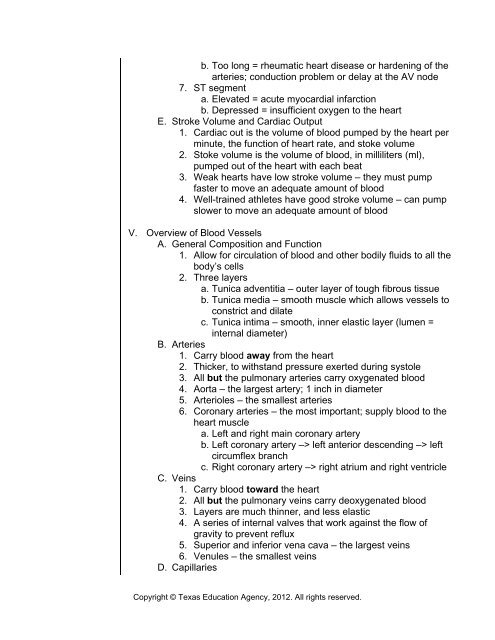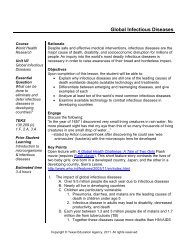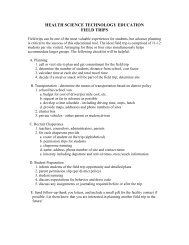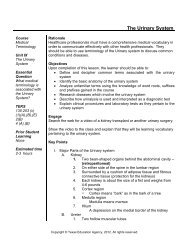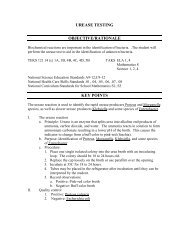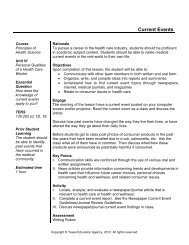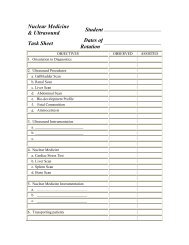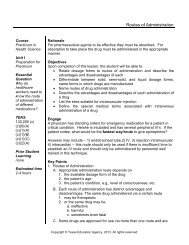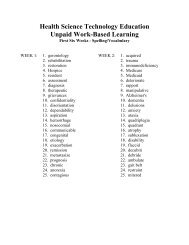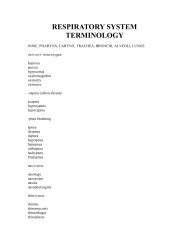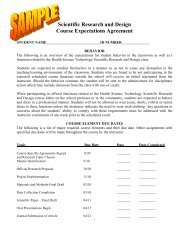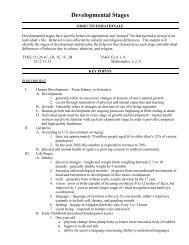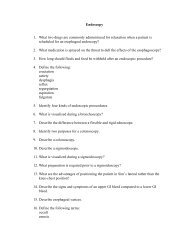Cardiovascular System - Health Science Technology Education
Cardiovascular System - Health Science Technology Education
Cardiovascular System - Health Science Technology Education
You also want an ePaper? Increase the reach of your titles
YUMPU automatically turns print PDFs into web optimized ePapers that Google loves.
. Too long = rheumatic heart disease or hardening of thearteries; conduction problem or delay at the AV node7. ST segmenta. Elevated = acute myocardial infarctionb. Depressed = insufficient oxygen to the heartE. Stroke Volume and Cardiac Output1. Cardiac out is the volume of blood pumped by the heart perminute, the function of heart rate, and stoke volume2. Stoke volume is the volume of blood, in milliliters (ml),pumped out of the heart with each beat3. Weak hearts have low stroke volume – they must pumpfaster to move an adequate amount of blood4. Well-trained athletes have good stroke volume – can pumpslower to move an adequate amount of bloodV. Overview of Blood VesselsA. General Composition and Function1. Allow for circulation of blood and other bodily fluids to all thebody’s cells2. Three layersa. Tunica adventitia – outer layer of tough fibrous tissueb. Tunica media – smooth muscle which allows vessels toconstrict and dilatec. Tunica intima – smooth, inner elastic layer (lumen =internal diameter)B. Arteries1. Carry blood away from the heart2. Thicker, to withstand pressure exerted during systole3. All but the pulmonary arteries carry oxygenated blood4. Aorta – the largest artery; 1 inch in diameter5. Arterioles – the smallest arteries6. Coronary arteries – the most important; supply blood to theheart musclea. Left and right main coronary arteryb. Left coronary artery –> left anterior descending –> leftcircumflex branchc. Right coronary artery –> right atrium and right ventricleC. Veins1. Carry blood toward the heart2. All but the pulmonary veins carry deoxygenated blood3. Layers are much thinner, and less elastic4. A series of internal valves that work against the flow ofgravity to prevent reflux5. Superior and inferior vena cava – the largest veins6. Venules – the smallest veinsD. CapillariesCopyright © Texas <strong>Education</strong> Agency, 2012. All rights reserved.


